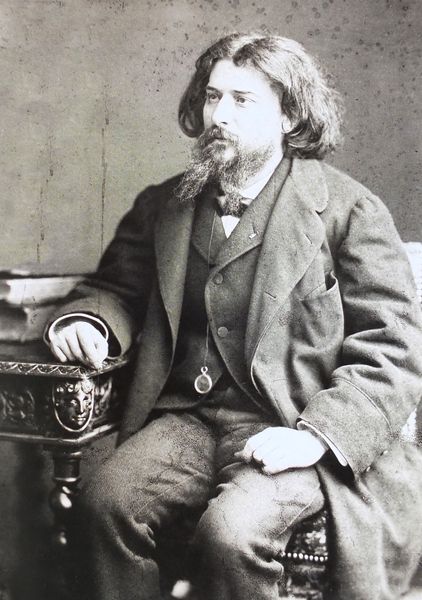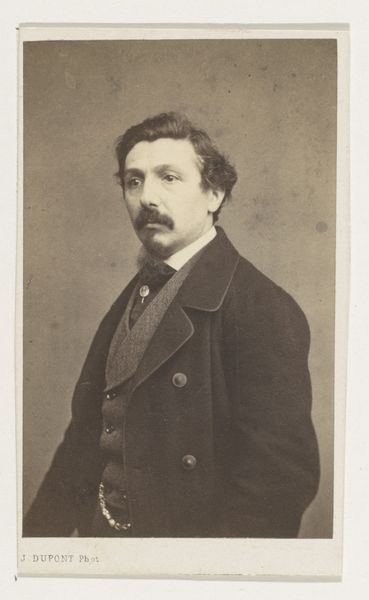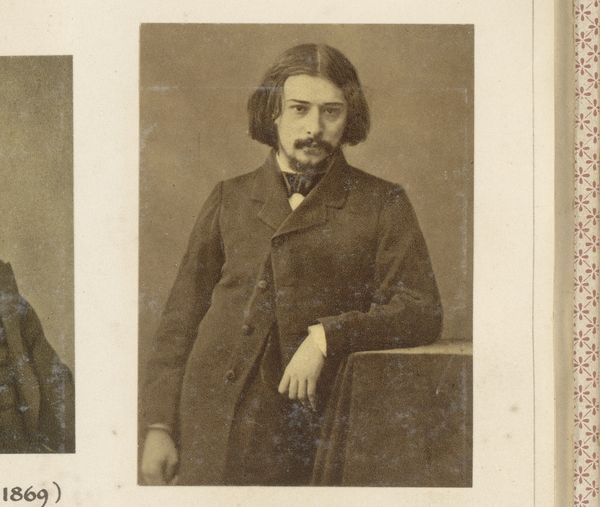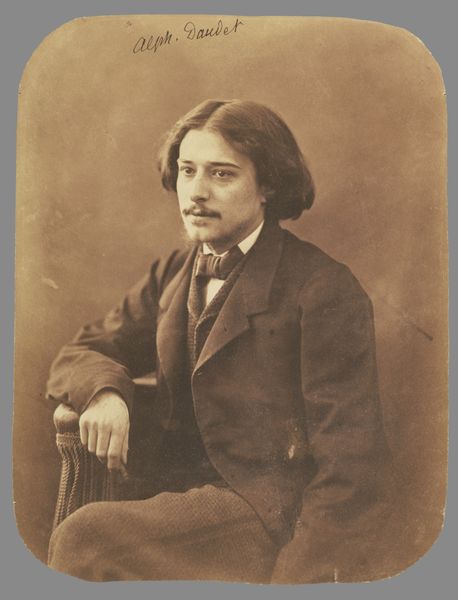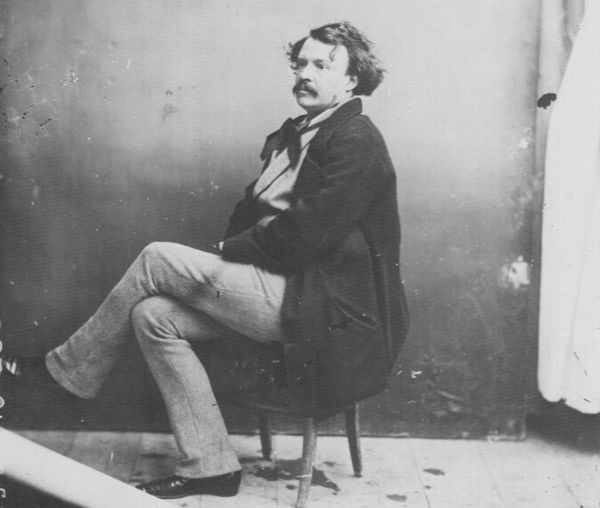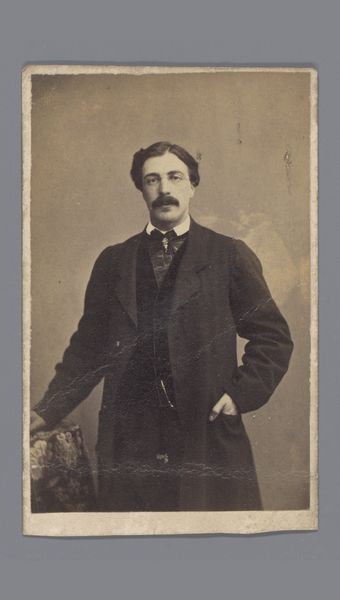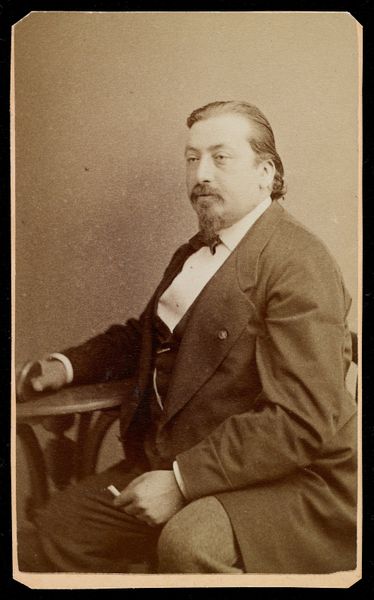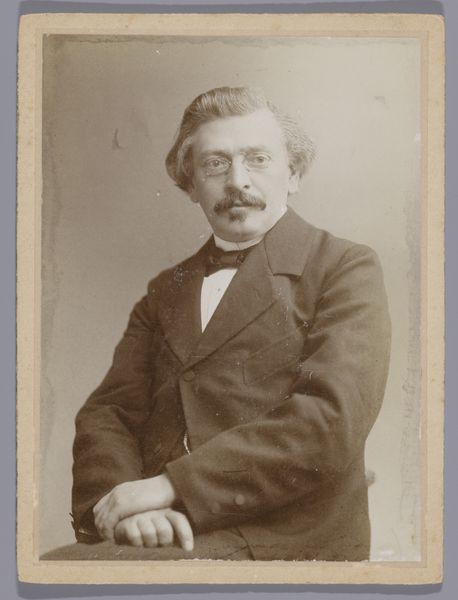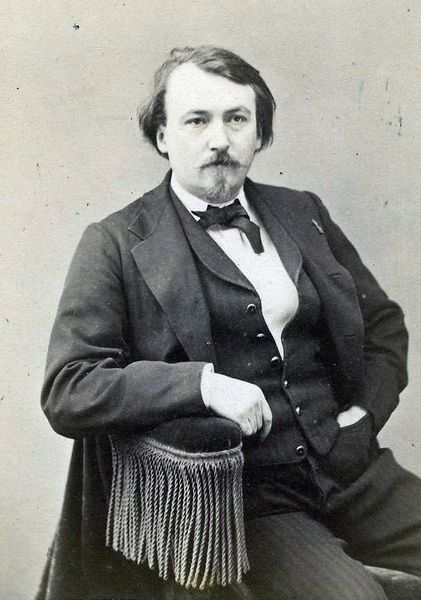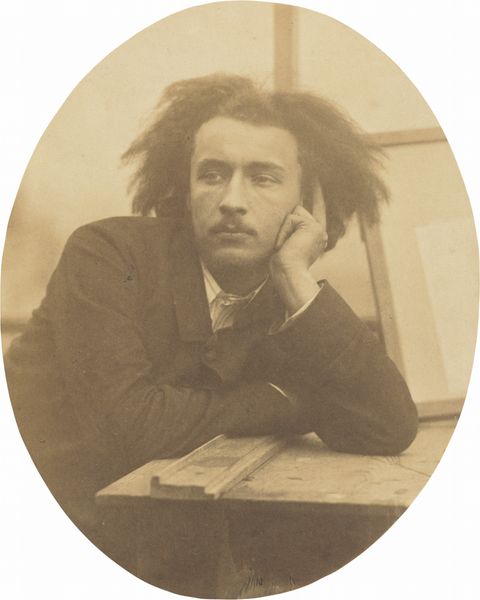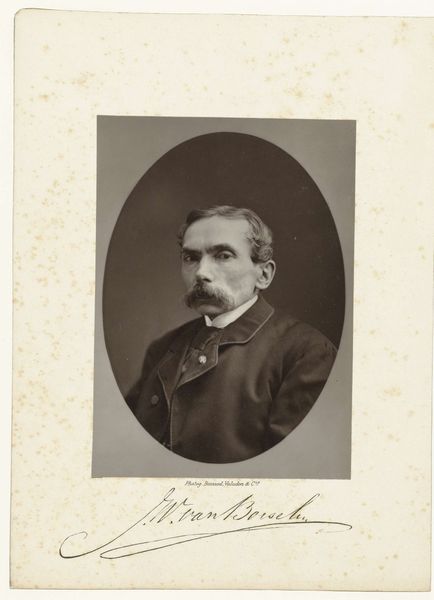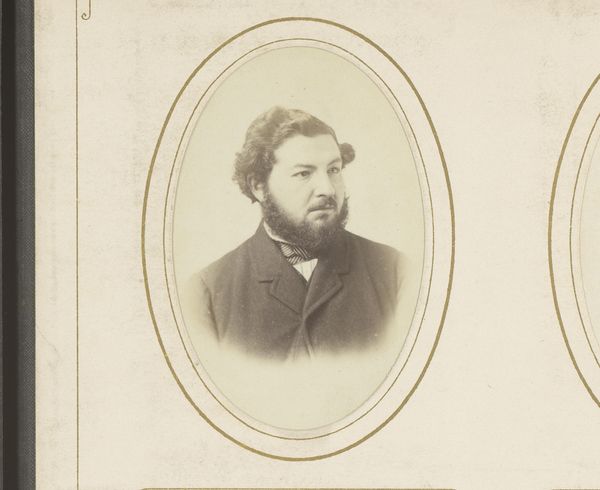
#
wedding photograph
#
black and white photography
#
portrait image
#
black and white format
#
b w
#
black and white theme
#
strong emotion
#
black and white
#
monochrome photography
#
monochrome
Copyright: Public domain
Editor: Here we have Félix Nadar's 1866 portrait of Alphonse Daudet, captured in black and white. The image possesses a formal quality, but the soft gradations of light and shadow, achieved with some photographic method I don't yet fully grasp, create a sense of intimacy. What stands out to you? Curator: What's striking to me is the industrial context allowing for this image. The mid-19th century saw photography democratized due to advances in photographic materials and the rise of studios like Nadar's, who, while known for artistic portraits, operated a commercial enterprise. The paper, the developing process—consider the chemical industry supporting it all, impacting the labour involved in portraiture. What does this suggest to you about access to image-making? Editor: That’s fascinating. So, while we might see this as high art, it’s underpinned by industrial production, mass production of the photograph materials making it more accessible. This allows a wider range of individuals, even authors like Daudet, to participate in image culture than say, painted portraiture did. Does that influence the type of images created? Curator: Absolutely! Consider how the rise of photographic portraiture reshaped understandings of self-representation and celebrity. Daudet's carefully constructed pose, the attention to his clothing... these speak to the rising importance of visual image in constructing and disseminating identity facilitated by accessible technologies. Think about the photographer’s own labor too. Editor: Right, it's a collaboration shaped by the available tools and the evolving social landscape. I guess I hadn't fully appreciated how material processes are entangled with artistic expression. Thanks, I see how examining those relationships offer new ways to understand art. Curator: Exactly. By attending to those details, photography reveals the impact of technological change on both art production, and cultural life.
Comments
No comments
Be the first to comment and join the conversation on the ultimate creative platform.
